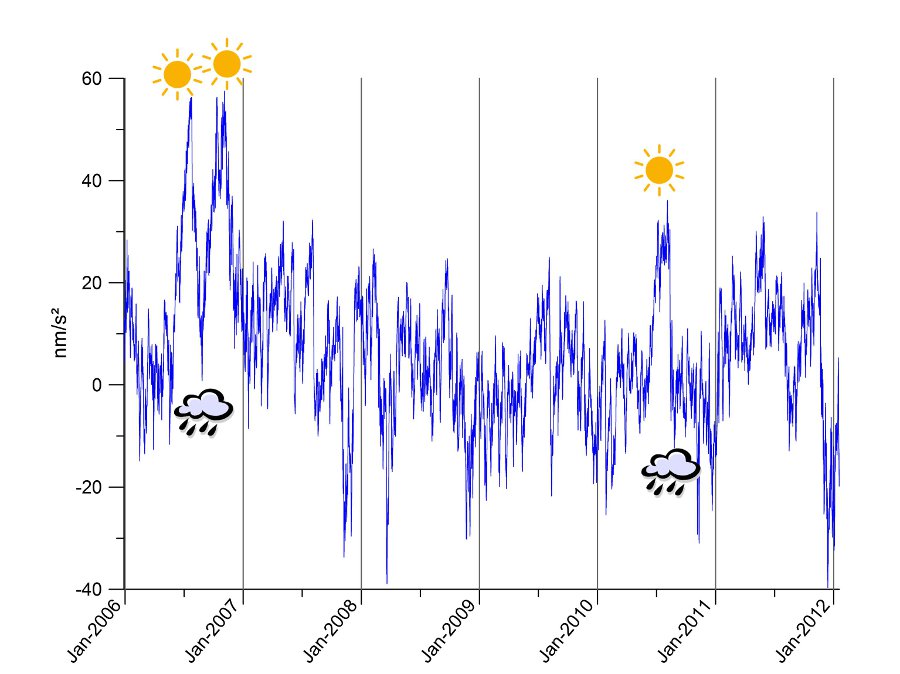Usually, seasonal variations are visible in the gravity measurements. Those effects are caused by the recharge of the aquifers during the winter, causing an increase in gravity at spring time, and conversely, a decrease during fall. At the Membach site, this effect is inverted, because the station is underground; consequently, the water masses are stored above the gravimeter. Hence strong increases in gravity were observed in 2006 at the end of July (dogs days) and during the sunny fall. Conversely, a strong decrease in gravity was monitored during the exceptional rainfall in August2006 and 2010, as the ground water content induces an upward Newtonian attraction.

Figure : Variations of gravity at the Membach station as monitored between January 2006 and January 2012, after correcting for tidal and atmospheric pressure effects. Note the fast decrease in gravity after the strong rainfalls in August 2006 and 2011, as well as an new increase in gravity during the sunny Fall 2006. These variations range 20-60 nm/s2, i.e. 2 to 6 billionth of gravity.
Correcting for hydrogeological effects is an active research field in Membach, Rochefort (www.karag.be) and other reference stations in the world. It is still very difficult to correct for these effects and it requires a comprehensive hydrogeological investigation around the station, which could not be performed everywhere. However, we showed that after 10 to 20 years of repeated measurements, the hydrogeological effects should cancel out and allow determining gravity rates of changes caused by a tectonic activity, even at a level of one tenth of a billionth of g, in other words 1 nm/s2/year.
Hydrogeological effects alter geodetic measurements. Conversely, geodetic tools provide novel ways to monitor ground water masses, which remain difficult to assess. The superconducting gravimeter of Rochefort was installed for that purpose (www.karag.be).
